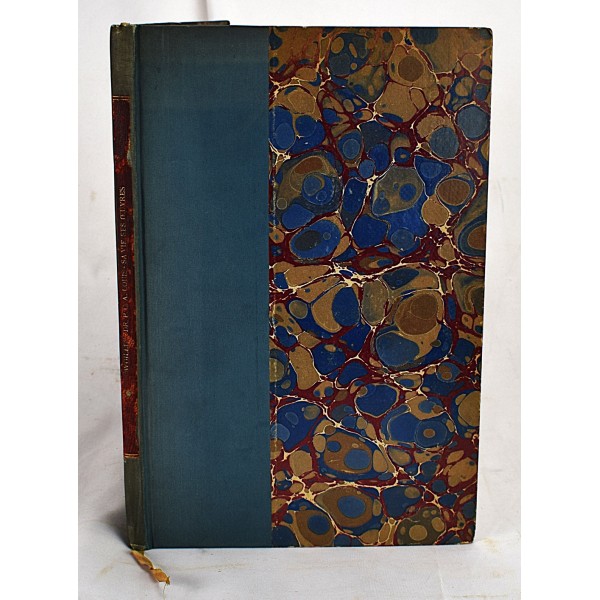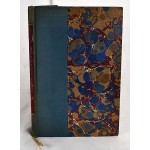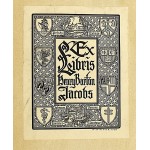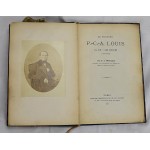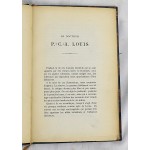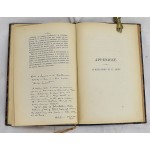Le Docteur P.-C.-A. Louis; sa vie, ses Oeuvres (1787-1872)
Le Docteur P.-C.-A. Louis; sa vie, ses Oeuvres (1787-1872)
Eugene Joseph Woillez
P. Dupont, Paris,1873
[Interesting provenance, previously owned by Henry Barton Jacobs, then later by noted medical scholar Owen Hannaway.] Bound in blue cloth over marbled boards. Leather spine label. Hardcover. Shelf wear. Gutters starting. Bookplate of Jacobs on verso. 58 pages, frontispiece (portrait), 24 cm.
Pierre Charles Alexandre Louis (1787-1872) has been the direct or indirect mentor of influential U.S. and English scientists in public health, epidemiology, medicine, and biostatistics during the 19th and 20th century. Louis was primarily a clinician, but his name has been more closely associated with the history of epidemiology. There is an imbalance between the fame of Louis's scientific contribution and the scarcity of in depth analyses of his work. The controversy related to the usage of bloodletting for treating inflammatory diseases is one of the most famous episodes of Louis's work. A modern analysis of Louis's data confirms his original conclusions; that is, early bloodletting seems to reduce the duration of a pneumonitis disease in patients who survive from this disease but may also increase the overall short-term mortality. Some basic algebraic mistakes in computations of means tend to attenuate the verdict against bloodletting, but these are trivial relative to the rigor of the overall demonstration and to Louis's methodological contribution to clinical observation. Louis firmly belongs to the history of epidemiology. He deserves a similar place in the history of medicine.
Henry Barton Jacobs was a educator and physician from Maryland. Jacobs came to Baltimore to become the private physician for Robert Garrett, who was then president of the Baltimore and Ohio Railroad. After Garrett's death in 1896, Jacobs joined the faculty of the Johns Hopkins University School of Medicine, retiring in 1905. He actively participated in organizations directed toward the treatment and eradication of tuberculosis. In 1911, Jacobs was elected a trustee of The Johns Hopkins Hospital, a position he held until his death. William Osler was considered a universal friend by physicians of his era but, as with most people, his intimate friends were few. Henry Barton Jacobs became a close friend as one of the 'latchkeyers' who lived next door to the Oslers in Baltimore, and the friendship intensified after Jacobs married Mary Sloan Frick Garrett, the fabulously wealthy widow of a former patient. The couples stayed close after the Oslers moved to Oxford, vacationing together and corresponding frequently. The couple friendship between the Oslers and the Jacobses benefited American medicine in specific ways, including the care of patients with tuberculosis and the care of children.
From the library Dr. Owen Hannaway. Hannaway was director of the Center for the History and Philosophy of Science at Johns Hopkins University. He authored numerous books and served as an editor of academic magazines in the history of science. Partial list of publications: Chemists and the Word: The Didactic Origins of Chemistry (1975); Observation, Experiment, and Hypothesis in Modern Physical Science (1985); The Evolution of Technology (1989); Science and the Practice of Medicine in the Nineteenth Century (1994); and The Foundations of Modern Science in the Middle Ages: Their Religious, Institutional and Intellectual Contexts (1996).
